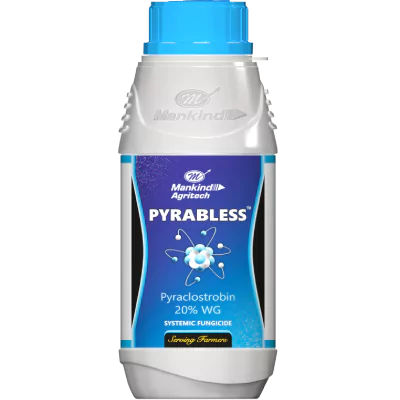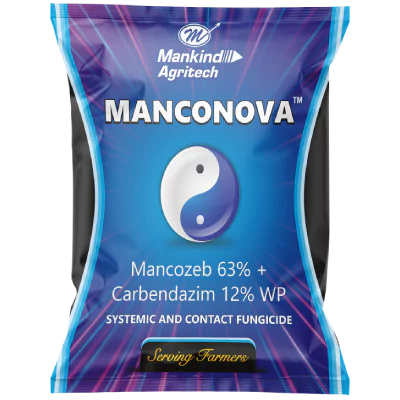Rice, or paddy, is one of the most important staple crops in the world, feeding more than half of the global population. However, the journey from seed to grain is not without challenges. One of the most persistent threats to paddy cultivation is fungal diseases. These diseases not only reduce yield but also affect the overall quality of the produce. This makes the use of the right fungicide for paddy a critical decision for every rice farmer.
With a growing range of chemical and biological solutions available in the market, choosing the appropriate product from the vast agriculture fungicide list can be overwhelming. This guide provides a comprehensive guide on how to make the right choice of fungicide for effective and sustainable paddy cultivation.
Understanding the Need for Fungicides in Paddy Cultivation

Fungal infections are a major concern in paddy fields due to the crop’s long-standing exposure to water, humidity, and high temperatures—conditions that are ideal for fungal growth. Diseases like blast (caused by Magnaporthe oryzae), sheath blight (Rhizoctonia solani), and brown spot (Bipolaris oryzae) are common threats to rice crops across different regions.
The use of fungicide for paddy helps in:
- Preventing fungal infection during early and critical growth stages
- Controlling the spread of disease in an affected field
- Enhancing crop resilience and improving overall yield quality
- Reducing the impact of climatic unpredictability on crop health
Factors to Consider When Choosing Fungicide for Paddy

Selecting the right fungicide is not a one-size-fits-all approach. Farmers must evaluate several critical factors before deciding which product to use. Here’s what to keep in mind:
1. Type of Fungal Disease
The first step is to identify the specific disease affecting or threatening the crop. Each fungicide is designed to combat a specific pathogen. For example:
- Blast is best controlled with triazole or strobilurin-based fungicides
- Sheath blight responds well to SDHI (Succinate Dehydrogenase Inhibitor) fungicides
- Brown spot is usually controlled using systemic fungicides with protective and curative action
Correct disease identification helps you match the product with its intended target, ensuring maximum efficacy.
2. Mode of Action
Fungicides can work in different ways—protective, curative, or eradicative. Understanding this helps you apply them at the right time:
- Protective fungicides form a barrier to prevent fungal entry and should be used before infection.
- Curative fungicides act on the fungus after it has entered the plant tissue but before symptoms become severe.
- Eradicative fungicides are used to eliminate visible fungal growth.
Ideally, a combination of protective and curative action ensures the best coverage in paddy fields, especially during the tillering and booting stages.
3. Systemic vs. Contact Fungicides
Fungicides can also be categorized by how they act on the plant:
- Contact fungicides stay on the surface of the plant and protect it externally. These need frequent reapplication, especially after rain.
- Systemic fungicides are absorbed by the plant and move within its tissues, offering prolonged protection.
For paddy cultivation, systemic fungicides are often preferred due to their longer-lasting effects and better control of internal infections.
4. Crop Stage and Timing of Application
The growth stage of the paddy plant is crucial in determining the ideal fungicide. For instance:
- During tillering, protective fungicides help reduce early infection
- During panicle initiation, curative products prevent the spread of sheath blight
- At flowering or heading, systemic fungicides can protect the grain
Applying fungicides at the right time prevents irreversible damage and improves the chances of full recovery.
5. Resistance Management

Repeated use of the same fungicide can lead to the development of resistant fungal strains. To prevent this:
- Rotate between fungicides with different modes of action
- Avoid overuse of a single chemical group
- Follow the agriculture fungicide list approved by local agricultural departments to ensure responsible use
Integrated resistance management helps maintain fungicide effectiveness for future crops.
6. Environmental and Health Safety
As agriculture moves toward sustainability, the environmental and health impacts of agrochemicals cannot be ignored. When selecting a fungicide for paddy, look for products that:
- Have a low toxicity profile
- Leave minimal residue on the grain
- Are safe for beneficial insects and aquatic life
Organic or biocontrol fungicides, though slower in action, offer environmentally friendly alternatives, especially for eco-conscious farming practices.
7. Cost and Accessibility
While effectiveness is crucial, farmers also need to consider the cost of the product, ease of application, and local availability. Some advanced formulations might be effective but not readily available or affordable to smallholder farmers.
Always balance efficacy with cost-effectiveness, and whenever possible, consult an expert or agronomist for personalized guidance.
Overview of Common Products from the Agriculture Fungicide List

Here are some commonly used classes of fungicides in rice cultivation, which often appear in any standard agriculture fungicide list:
- Triazoles (e.g., Propiconazole, Tebuconazole): Broad-spectrum systemic fungicides
- Strobilurins (e.g., Azoxystrobin): High mobility and long-lasting protection
- SDHIs (e.g., Isopyrazam): Effective against sheath blight
- Copper-based fungicides: Widely used for seed treatment and foliar application
- Biocontrol agents (e.g., Trichoderma spp.): Used in organic or integrated disease management
Farmers should use these in a rotation plan to minimize resistance buildup and ensure sustainable results.
Best Practices for Fungicide Use in Paddy Fields
To get the best results from any fungicide for paddy, follow these best practices:
- Always follow label instructions and dosage recommendations
- Use clean, calibrated spraying equipment
- Apply in the early morning or late afternoon to prevent evaporation
- Avoid spraying just before rain unless the product is rainfast
- Monitor the field regularly to detect symptoms early
Combining chemical fungicides with good cultural practices such as proper spacing, timely weeding, and water management can drastically reduce the disease load in the field.
Conclusion
Selecting the right fungicide for paddy is a strategic decision that depends on the disease type, crop stage, environmental factors, and overall farming goals. With a clear understanding of the various options in the agriculture fungicide list, farmers can make informed decisions that protect their crops, reduce losses, and enhance yield quality.
For farmers seeking reliable, high-performance fungicide solutions, Mankind Agritech is a name you can trust. With a robust portfolio of scientifically formulated products tailored to diverse agricultural needs, Mankind Agritech empowers farmers with effective crop protection tools, ensuring healthier harvests and greater peace of mind. Whether you’re managing a small paddy field or a large rice-growing operation, their expert support and field-tested solutions help you stay ahead of crop diseases and farming challenges.

